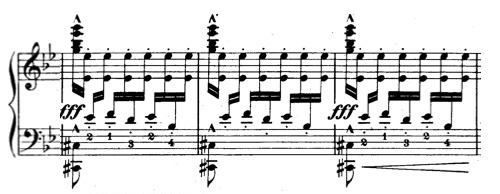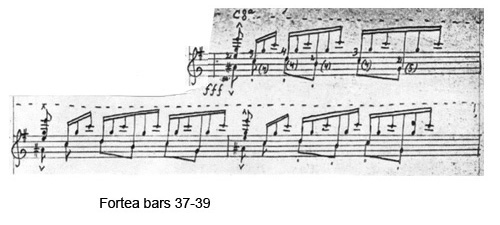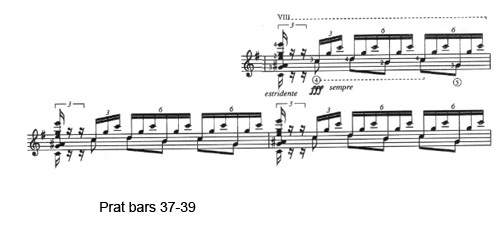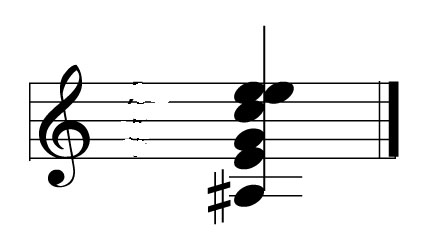For part 2 of this series, let’s have a look at bars 37–39. This is part of the climax of the opening allegro section, where similar melodic material to the opening is punctuated by accented chords, imitating the rasgueado (strumming with the backs of the right hand nails) technique on the guitar. Here we see a favourite harmonic device of Albeniz’s, the augmented-sixth Phrygian dominant used in place of an ordinary dominant. In this case a C# augmented-sixth which leads into a D major chord. This passage is especially problematic for guitar transcriptions, as we shall see, as the exact voicing of the original is impossible on the guitar.

Fortea keeps the augmented 6th chord of the original, revoiced for the guitar, with the bass A# undoubled and raised one octave higher. His chord seems a good solution in many respects, however it does weaken the voice leading of the bass A# leading to bar 40’s B major chord, as the octave has shifted. There is also the issue of making the chord fortississimo when it is played on only the four treble most strings.

Prat takes a different approach – the C# augmented 6th chord (which would be an A# augmented 6th chord in the guitar key of Em), is replaced with a C dominant 7th chord. Although both chords share the same notes (with the A# spelt Bb in the case of C dominant 7th) the sound is somewhat different. The original chord transposed to the key of this transcription would have the bass A# leading into the B of the B major chord about to arrive in bar 41. The C dominant chord does allow for a strong six string voicing, and gives a strong cadence when it resolves to B major in bar 41. Segovia uses the same chord in his published score, however in his recorded version he uses a chord more similar to the original with an A# in the bass.

Keeping the A# in the bass and the high E in the treble makes for some very difficult fingerings. Yates retains the A# in the bass keeping the harmony intact, but changes the treble to a C. Yates has explained why he would rather keep the A# in the bass and sacrifice the high E: “it is this note [the A#] that defines the inversional quality of the harmony, and which provides very strong chromatic voice-leading in the lower voice” (from this article).

In the following figure I have transposed the original chord to the key of Em, and compared it to solutions found in the transcriptions of Fortea, Prat, Segovia, The chord found in Segovia’s recorded version, and Yates. Numbers 6 and 7 are both my attempts by to find a different solution retaining both outer voices of the original. Of the transcriptions I’ve looked at, only Fortea and Segovia (in the recorded version) have kept the outermost notes unchanged, albeit with different octaves, thus changing the voice leading. Prat and Segovia (published version) Have a revoiced version, somewhat changing the sound to that of a C dominant 7th chord. Yates changes highest note, keeping the bass intact. my two attempts are unfortunately very difficult to finger for the left hand, and still have the disadvantage of containing only four strings, making it difficult to make them sound fortissimo.

For my final transcription I decided to use the following chord:

This is a common problem when transcribing from guitar. As always there is no right answer, just a compromise that hopefully works in the context of the rest of the transcription.
